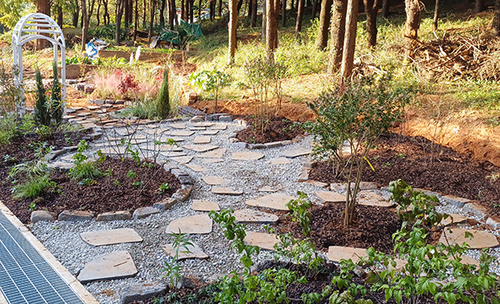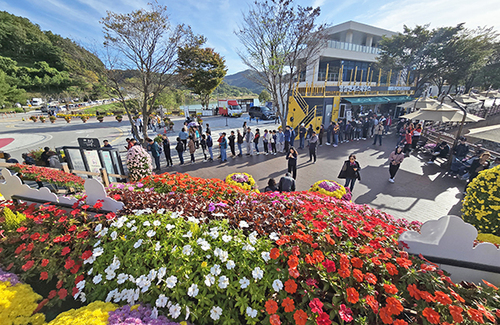| ▲ 전국 시ㆍ도별 중증열성혈소판감소증후군(SFTS) 환자 발생수. / 도표제공 = 전라북도 보건환경연구원 © 이도형 기자 |
|
전북에서 최근 1주일(18일~23일) 사이 3명이 중증열성혈소판감소증후군(SFTS = Severe Fever with Thrombocytopenia Syndrom) 양성 환자가 발생해 각별한 주의가 요망된다.
26일 전북보건환경연구원은 "올해 진안ㆍ전주ㆍ정읍에서 진드기 매개 감염병 환자가 발생한 가운데 A씨는 밭에서 농작업을 한 뒤 발열과 설사 등의 증세로 치료를 받아 호전된 상태며 다른 2명은 현재 역학 정보를 확인하고 있다"고 밝혔다.
이 질병은 SFTS 바이러스를 보유한 참진드기에 물려 감염되며 야외활동이 활발한 4~11월에 중ㆍ장년층 및 면역력이 약한 노년층에서 주로 발생하는 것으로 보고되고 있다.
특히 6~14일간의 잠복기를 거쳐 ▲ 고열(38~40℃) ▲ 소화기증상(오심・구토・설사 등) ▲ 혈소판 감소 등의 증세를 동반하며 심할 경우 사망할 수 있다.
2주 이내에 이 같은 증상이 나타날 경우, 즉시 의료기관을 방문해 야외활동 이력을 알리고 진료를 받아야 한다.
SFTS는 2013년 5월 21일 국내에서 발생 사례가 확인된 이후 지난해까지 총 1,697명(317명 사망)의 환자가 감염된 것으로 집계됐다.
올해는 지난 4월 5일 해남(80대 여성)에서 첫 환자가 발생해 다음 날 사망했고 지난 12일 제주도 서귀포시에 거주하는 40대 여성이 발열과 두통 등의 증상을 보여 치료를 받았으나 안타깝게 목숨을 잃었다.
도내에서는 ▲ 2015년 2명 ▲ 2016년 3명 ▲ 2017년 10명(2명 사망) ▲ 2018년 13명(6명 사망) ▲ 2019년 18명(5명 사망) ▲ 2020년 11명 ▲ 2021년 6명 ▲ 2022년 10명 등의 환자가 발생했다.
SFTS는 치명률(18.7%)이 높지만, 예방백신과 치료제가 없어 주의해야 하는 감염병으로 한번 감염된 사람도 재감염될 수 있어 진드기가 활동하는 시기인 6~10월 산이나 들판에서 진드기에 물리지 않도록 주의하는 것이 최선의 예방이다.
풀숲에 들어갈 때는 긴 소매와 긴 바지 등을 착용해 피부 노출을 최소화하고 집에 돌아온 후 즉시 샤워나 목욕하고 옷은 곧바로 세탁하는 것이 좋다.
김호주 전북보건환경연구원장은 "감염자 가운데 50대 이상의 농업 및 임업 종사자의 비율이 높은 것으로 알려져 있는 만큼, 농촌지역 고연령층은 진드기 매개 감염병 예방수칙을 반드시 준수해 줄 것"을 당부했다.
☞ 아래는 위 기사를 구글 번역이 번역한 영문 기사의 '전문' 입니다.
구글 번역은 이해도를 높이기 위해 노력하고 있으며 영문 번역에 오류가 있음을 전제로 합니다.
【Below is the 'full text' of the English article translated by Google Translate.
Google Translate is working hard to improve understanding, and assumes that there are errors in the English translation.】
Tick-borne infectious disease 'warning' issued
Jeonbuk… 3 positive cases occurred in the last 1 week
Reporter Lee Do-hyung
In Jeonbuk, three positive patients with severe fever with thrombocytopenia syndrome (SFTS = Severe Fever with Thrombocytopenia Syndrom) occurred in the past week (18th to 23rd), requiring special attention.
On the 26th, the Jeonbuk Health and Environment Research Institute said, “Among patients with tick-borne infectious diseases occurred in Jinan, Jeonju, and Jeongeup this year, Mr. A was treated for symptoms such as fever and diarrhea after working in the field and has improved. We are checking the epidemiological information," he said.
This disease is transmitted by being bitten by a tick carrying the SFTS virus, and is reported to occur mainly in the middle-aged and elderly and the elderly with weak immunity during active outdoor activities from April to November.
In particular, after an incubation period of 6 to 14 days, ▲ high fever(38 ~ 40 ℃) ▲ digestive symptoms(nausea, vomiting, diarrhea, etc.) ▲ platelet reduction, etc., and in severe cases, death can occur.
If these symptoms appear within 2 weeks, you should visit a medical institution immediately and inform them of your outdoor activity history and seek medical attention.
Since the first case of SFTS was confirmed in Korea on May 21, 2013, a total of 1,697 patients(317 deaths) were infected until last year.
This year, the first patient occurred in Haenam (a woman in her 80s) on April 5 and died the next day. .
In the province ▲ 2 in 2015 ▲ 3 in 2016 ▲ 10 in 2017(2 deaths) ▲ 13 in 2018(6 deaths) ▲ 18 in 2019(5 deaths) ▲ 11 in 2020 ▲ 2021 6 ▲ 10 patients occurred in 2022.
SFTS has a high fatality rate(18.7%), but it is an infectious disease that requires attention because there is no preventive vaccine or treatment, and even a person infected once can be reinfected. Prevention is the best.
When entering the grass, wear long sleeves and long pants to minimize skin exposure, shower or bath immediately after returning home, and wash clothes immediately.
Kim Ho-joo, director of the Jeonbuk Health and Environment Research Institute, said, "As it is known that a high percentage of agricultural and forestry workers in their 50s or older is among the infected, the elderly in rural areas must follow the rules for preventing tick-borne infectious diseases."





















 많이 본 뉴스
많이 본 뉴스











